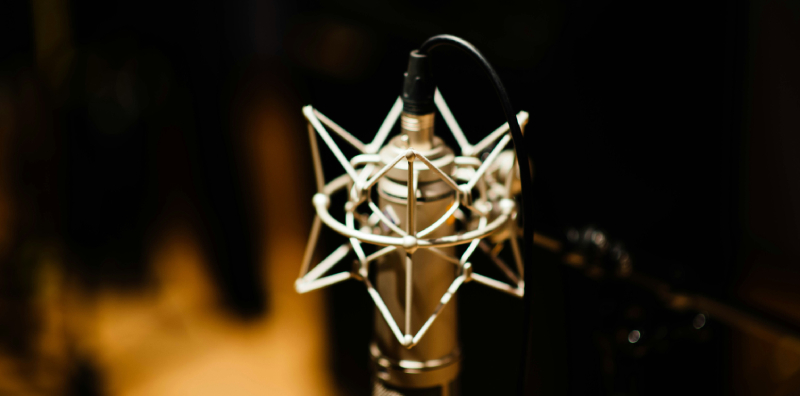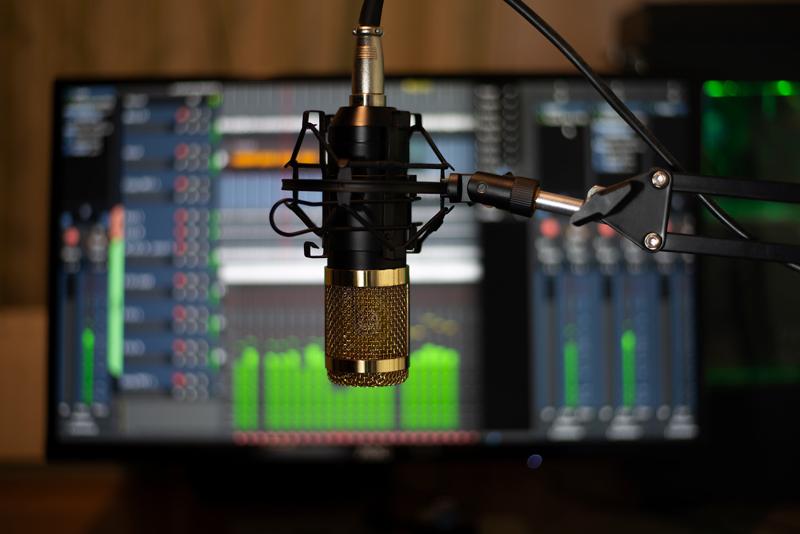Electronic dance music is one of the main genres in music production today. Not only do you see it as a pure EDM composition, but also as an influence on pop music and other genres.
Mastering EDM may seem easier than mastering live instruments because of the initial perfection of the synthesized sounds. But at the same time, it presents some unique challenges to the mastering engineer because you need to hit the loudness limits and at the same time keep the track dynamic and interesting enough.
When creating an EDM song, you must stay competitive in the music industry and stand out among thousands of other beautiful new EDM mixes.
EDM mastering services
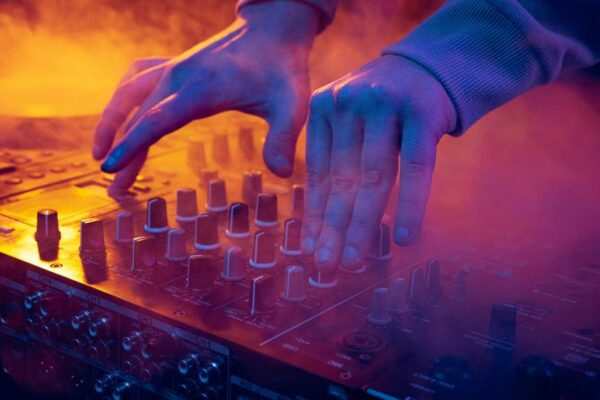 The only way to create songs that will become hits these days is to do everything professionally and up to industry standards. And mastering is not an exception to this rule; on the contrary, mastering is the step at which a professional approach is needed as never before.
The only way to create songs that will become hits these days is to do everything professionally and up to industry standards. And mastering is not an exception to this rule; on the contrary, mastering is the step at which a professional approach is needed as never before.
A mastering engineer’s work includes three main steps:
- Check for mixing mistakes and correct what’s possible
- Improve the sound even more and make the track sound even better without changing the balance of the mix
- Bring the loudness and other qualities to the top-chart industry level
Can you imagine these three steps being done by a person who doesn’t have rich experience and knowledge in mixing and mastering? The mastering engineer is the person you trust to get your mix ready to release and make sure the final master is the best.
At our Major Mixing studio, we can offer high-quality EDM mastering services because we constantly work with EDM and study every change in the music industry to keep all the parameters up-to-date. We don’t experiment, we know how to make an EDM mix sound great and ready for release.
We provide mixing and mastering services and create industry-level tracks that can successfully compete on streaming platforms.
Stem mastering gives more power to the mastering engineer
Artists and music producers looking for EDM mastering services come to our studio with their mixes. However, you need to have a great mix in the first place to get the best mastering results.
The mastering engineer is here to check your project and give suggestions on what to improve if necessary. Sometimes it happens that the mastering engineer finds flaws in the mix that have to be changed at the mixing level. For example, you may need to correct the balance between instruments, the stereo image of the mix, or certain instrumental parts or effects.
If you can not return to mixing for some reason, a great option in our EDM mastering services is to use stem mastering. It means that you send your project to the engineer in stems not in one track. This way, the professional can correct some mixing mistakes using stems at the mastering stage and make a better quality final product.
In the end, the goal of mastering is that the final master be perfect, everything you do should work toward this.
If you want to try and master EDM tracks yourself, keep reading, because further in this article we share with you several useful tips from our top mastering engineers on how to master EDM mixes.
The first step is to choose the right reference tracks
A good mastering engineer will choose a reference track or tracks to have examples of the sound qualities they are planning to reach.
To choose the right EDM tracks as references, make sure you check these three points:
- The reference tracks are new hits, not old
- They are the closest examples of what you want your song to sound like
- They are at least in the top 100 on billboards
References are the basis for the mixing and mastering processes. If even a professional engineer listens to one mix long enough, he’ll not be able to recognize what’s wrong with it anymore. You need to tune your ear by constantly listening to references and comparing. Otherwise, you’ll be driven away from the ideal very quickly.
Among other parameters, you’ll look at the frequency curve, dynamics, loudness, stereo widening, different forms of harmonics, and distortion that were used in the track.
So take your time and carefully choose the best references.
Is your studio ready for EDM mastering process?
If you want to do the work of a mastering engineer, you need to prepare a studio, even at home, that will provide you with the correct listening environment, otherwise, it will not be possible to make sure your final track will sound good.
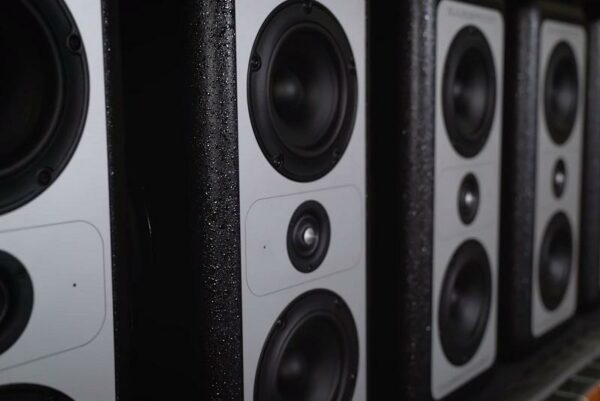 Use the best monitors
Use the best monitors
First, make sure your playback system is of the highest quality. Use professional monitors that reproduce all the audible frequencies correctly.
Acoustic treatment of your studio
If your monitoring environment reflects sounds, you’ll hear not only the music played but also all the reflections and resonances your room is creating, which will cause you to make bad mastering choices.
You have to make sure your studio is acoustically treated. Bass traps must cover the corners, and acoustic panels should be put on the walls to absorb the sound and prevent reflections.
Only if your studio is properly treated for sound will you be able to hear the exact music your monitors are playing.
Can I mix and master using headphones?
Many artists and producers prefer to use headphones for mixing and mastering. They see it as a cheaper and more mobile option. It makes sense, but still, headphones will never work as well as hearing the music in a perfect studio with high-quality monitors. However, many people feel that it works for them.
To achieve the best mixing or mastering results in this case, choose the best quality open-back headphones.
The important thing to understand in this case is that with headphones, you can only hear the left channel of the mix with your left ear and the right channel with your right ear. This does not provide the correct picture of the stereo you are working on because, in real life, the listener will often use speakers, and both channels will be heard with both ears, just in a different way.
If you are wearing headphones to work on your EDM mix, don’t forget to use one of the studio-simulating plugins to hear the music the same way you would in an actual studio.
Master at the right volume
No matter if you are using monitors or headphones, it’s easy to turn the volume up as much as possible when you are working with EDM because this music is meant to be loud and overwhelming. However, there are a few reasons why you need to set only a moderate volume while working on any mix.
The reasons not to set the volume too high:
- As a musician, you should care for your ears. Loud music will soon cause listening fatigue, and you’ll not be able to hear as clearly as you want. It may also hurt your brain.
- The human ear is built in such a way that it perceives middle and high frequencies much better than bass at the middle and low volumes. The reason for this is that our ear is designed to hear frequencies related to quiet human speech the best.However, the louder the music gets, the better we perceive the low-end compared to the mid and high-end parts of the audible spectrum.So, if you mix and master EDM playing it too loud, the chances are the low-end part will seem too weak to the audience when they play your song at a moderate volume.
- Mastering is not only about making the sound better but also about the final check-up for flaws, such as small clicks and other defects. These things are much easier to spot at medium volume. And you want your track to be spotless, so you need to be careful with the volume.
Want a free test mix of your track?
We get it.
That’s why we’ll do a full hybrid (analog + digital) mix of your song —
for free.
No upfront payment. No risk.
You only pay if you’re blown away. And if you are, we’ll slash 40% off the final price.
Nobody else in mixing and mastering offers this.
Why?
Because most studios say yes to every project. We don’t. We only mix what we’re excited about — so send us your best track. If we like it, we’ll mix it like it’s going to the Grammys.
👉 Just drop your name and email to get started.
EDM mastering tips from Major Mixing mastering engineers
And now we are getting to the actual mastering process and plugins you’ll use. EDM is usually made very loud and compressed already at the mixing stage, so mastering here seems a bit easier than for some other genres. The very nature of this music suggests that it can achieve extreme loudness because virtual instruments can be turned up a lot without causing a problem.
The mild distortion that is created by applying extreme loudness to EDM only emphasizes the music’s quality and serves as the icing on the cake. Without this distortion, a modern EDM song is not complete.
Equalization
 First comes the correct equalization. We need to find the right frequency balance between high and low frequencies to reach maximum perceived loudness. But the music should not become dull with it, the low end must remain rich and interesting.
First comes the correct equalization. We need to find the right frequency balance between high and low frequencies to reach maximum perceived loudness. But the music should not become dull with it, the low end must remain rich and interesting.
Create the right frequency spectrum
For this, we’ll use, for example, the equalizer FabFilter Pro-Q and shape the frequency curve according to our reference. Use wide EQ bands to do general tone shaping.
Clean up problematic frequencies
Use narrow bands to deal with specific frequencies that are bothering you in the song and will sound harsh when played loud through speakers at a concert or in a club. For example, if you have a 3 kHz harsh frequency spoiling the mix, use a narrow band in the EQ to attenuate it.
Make low-end mono
Equalization also helps us cut the low end in the Side channel. We don’t want any phase issues in the bass frequencies of our EDM masters.
Moreover, when it is played through speakers, usually there will be only one subwoofer bringing low-end to mono anyway, and you don’t want any issues to occur there.
So everything lower 100-200Hz should be brought to mono in the project beforehand.
Compression
 The difference between mastering EDM music and other genres is that master bus compression should be applied only slightly. Usually, master bus compression for EDM songs makes the music weaker, not stronger. And the last thing you want to do is make your finished master sound weak.
The difference between mastering EDM music and other genres is that master bus compression should be applied only slightly. Usually, master bus compression for EDM songs makes the music weaker, not stronger. And the last thing you want to do is make your finished master sound weak.
That is why in our Major Mixing studio for EDM mastering, we use a chain of compressors with very slight settings, adding around one or two dB at a time. These compressors help us tame transients and glue the song together.
This means that our mastering compression in this case doesn’t add any extra punch and doesn’t make the sound much fatter and fuller. We are just carefully working with dynamics to increase the perceived loudness.
Usually, we use about three compressors; they may include, for example, Elysia master compressor, API 2500, and others.
Saturation and soft clipping
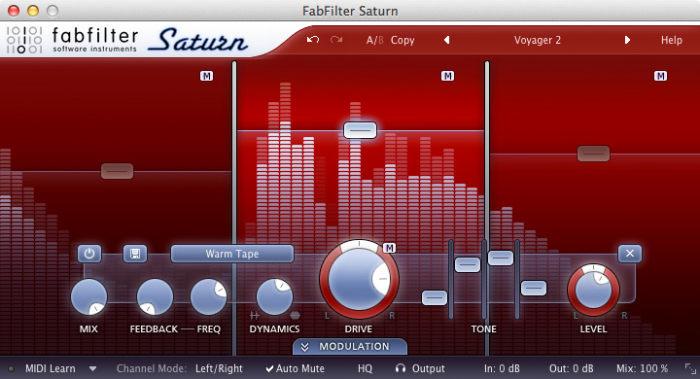 For mastering EDM, different saturators and soft clippers are extremely helpful.
For mastering EDM, different saturators and soft clippers are extremely helpful.
Cut the remaining peaks
One essential thing that these plugins will do is cut the transient attacks that the compressors didn’t catch. No matter how short the attack time we set using compressors, there can still be peaks that appear sooner than the compressor starts compressing the wave. At this stage, with soft clippers, we make sure these peaks are cut.
Add harmonics and loudness
Also, we take saturation and make the track even louder by using it. A good example of such a plug-in is Sonnox Oxford Inflator. It will increase perceived loudness and insert harmonics into the mix, but the peak level will remain intact.
Here, as with compressors, our mastering engineer will use not one but two or three inflators and saturators.
Remove harshness
Then we use plugins like Soothe2 or DSEQ to remove harsh frequencies.
Synths often have a lot of energy at the high end. For this and other reasons, you will usually hear a lot of harsh frequencies in an EDM mix. When the music is enhanced with mastering, unpleasant frequencies pop up even more.
So, at this step, we gently decrease harsh and annoying frequencies by 1-2 dB and make the music more smooth. This way, the audience will not get tired of listening to your music, even at the highest levels of volume.
Apply limiter
 In the end, our mastering engineer will add a limiter, for example, A.O.M. invisible limiter, FabFilter Pro-L 2, or UAD Precision Maximizer.
In the end, our mastering engineer will add a limiter, for example, A.O.M. invisible limiter, FabFilter Pro-L 2, or UAD Precision Maximizer.
The track comes to this step almost ready for release. At this step, the mastering is almost finished. We apply final limiting to make sure the peaks reach no higher than about -2 dB, and there will be no inter-sample clipping even after the track is processed by streaming services.
Check every parameter one more time
In the end, you must carefully check all your meters. Use several metering plugins, not just one.
Check LUFS, peak, true peak, stereo width, frequency curve, and other parameters, and compare everything to the reference track.
Listen to the master on everything
It is crucial to use the best monitors and a professional studio listening environment when working on your project. However, it’s not enough.
You understand that your fans will not only listen to your music on perfect monitors. They will also play it in a car, on headphones, and with low-quality speakers. The task is to ensure that your track sounds as good as possible on any playback equipment.
For this purpose, you have to check your track on every playback system you have access to and try to make it work on everything.
Of course, you should check your music in mono as well. There are lots of places where your song will be played in mono, and by no means should it appear any less powerful when played in mono.
What is a good LUFS level for electronic music?
Electronic music sounds good when it is loud and powerful, and a huge part of that is reached at the mastering stage. However, your song will not be played louder than other tracks on a playlist because streaming services apply their standard normalization to all the streamed masters. They normalize the music based on the level of the perceived loudness of the whole song (or album) measured in integrated LUFS.
What is perceived loudness
Integrated LUFS (Integrated Loudness Units Full Scale) is the measurement that shows how loud a whole song (or album) appears to the listener.
When we hear different sounds with different bass frequencies and high frequencies, we feel they are louder or quieter based not only on the volume. When estimating loudness, our brains take many factors into account, including the duration of the sound and its frequency. This process is approximately recreated in the algorithm for calculating LUFS.
Streaming platforms normalization LUFS
The LUFS measurement is used by streaming services to normalize all the songs (albums) for playback.
Spotify and many other streaming platforms normalize all the songs to -14 LUFS integrated loudness for playback. At the same time, Apple Music and some other services use a level of -16 LUFS.
It doesn’t mean that streaming services determine the level your final master should be at. They just promise to turn your song down to their declared LUFS level, and most of them (but not all) will turn the song up if it’s mastered quieter.
What LUFS should my EDM song be?
The loudness of your EDM master must be determined by the dynamics you think is perfect for the song you are mastering. However, it is best to make it no quieter than -14 LUFS integrated. First of all, to make this decision, you will use your top-chart reference tracks. Check this parameter carefully and master your song to a similar level.
Generally, modern music is usually mastered between -7 LUFS and -14 LUFS. It gives some freedom to the mastering engineer, and your perfect master can be at any level you want. We already discussed that -14 LUFS and quieter will be too weak now, even for an instrumental ballad. A good loudness level is somewhere in the middle of this range.
You may be tempted to try and break the loudness record by making your song as loud as possible. But it will only kill the dynamics and actually make the song seem quieter and less interesting than competitor tracks when streaming services turn it down to their LUFS limits.
Practically speaking, the best LUFS to go with is what your top-chart reference is mastered at.
If you want to learn more about loudness measurements and the best levels for master records, check out our articles How loud should my master be and Spotify LUFS and How to master tracks for Spotify
An important step to making a winner EDM hit
Many electronic music producers are trying to do all the work themselves: sound design, mixing, and mastering. By the way, if you are learning to do audio engineering and create EDM mixes yourself, check out our article Mixing EDM, it will help you understand the basic mixing principles and how EDM mixing is different. But remember that studying and practicing will take time, and it’s not possible to get a deep understanding of EDM mixing and mastering overnight or even over a year or two.
So before you achieve deep knowledge and experience as an audio engineer and music producer, we advise you to cooperate with professional mixing and mastering engineers and let them prepare your music for release. Seriously, there is no way around it.
That’s why we invite you to study audio engineering and share the knowledge we have gained over the years, but we also encourage you to use our mixing and mastering services for your EDM song to beat your competitors now. Otherwise, your music will not get many plays for years.
If you have an EDM mix that needs to be professionally mixed and mastered, don’t hesitate to come to us with it. If you mixed it yourself, you’ll benefit even more from a professional mastering engineer’s help to check and make sure it is good for release. Remember, we are here to help you succeed.








